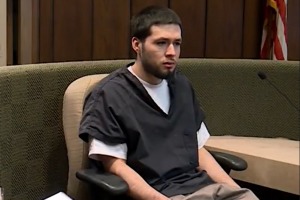The Sexual Predator Pattern
"He said if I told anyone, I would never see my family again."1 This is what one of the young victims in the Penn State sexual abuse scandal said to help the jury understand why kids who are sexually abused keep silent. But this act of "suppression" is just one small part of the grooming process by sexual predators.
Jerry Sandusky – the founder of a charity for at-risk youth, long-time assistant coach to legendary Joe Paterno and respected member of the community – is now a convicted child molester who can expect to live out the rest of his days behind bars.
At his Second Mile charity, Sandusky used his position to identify fatherless boys between the ages of 8 and 12. He then showered them with "special" attention, giving them gifts, parading them around the Penn State facilities, bringing them to the football games and fostering a father-son relationship before betraying their trust … by using them to satisfy his own depraved sexual appetite.
This perpetrator's lust-filled lifestyle amazingly reflects these words of warning written years ago: "I have a message from God in my heart concerning the sinfulness of the wicked: There is no fear of God before their eyes. In their own eyes they flatter themselves too much to detect or hate their sin. The words of their mouths are wicked and deceitful; they fail to act wisely or do good. Even on their beds they plot evil; they commit themselves to a sinful course and do not reject what is wrong" (Psalm 36:1-4 NIV).
The Sexual Predator's Pattern
Typically, childhood sexual abuse is not a onetime, isolated incident, but rather a premeditated plan resulting in repeated abuse by a perpetrator. While the details in each story of abuse may be different, perpetrators follow a predetermined pattern of behavior: first seducing, then stimulating, silencing and suppressing the child. Once suppressed, the child loses all hope. Sandusky repeatedly followed this pattern by developing a pool of victims and securing their silence for many years.
SEDUCTION – The perpetrator emotionally seduces the child by developing intimacy, progressively building trust and giving pleasure. This is accomplished by becoming an attentive "friend," showing preferential treatment, giving money, gifts, bribes or rewards. One victim testified that he received costly gifts like golf clubs and snowboards as well as Penn State football memorabilia.2 Sandusky sought out emotionally vulnerable children with difficult home lives so that he could provide a false sense of affection and security.
STIMULATION – The child feels pleasure in physical touch that seems appropriate, affirming and warm (playful wrestling and tender touching such as hugs and gentle back rubs). "Play-fighting," "soap battles" and horseplay were all used by Sandusky to break down physical boundaries and create opportunities for abuse.3 Over time, the child becomes desensitized and vulnerable to a progression of more advanced sexual activity.
The increased physical encroachment may not feel good initially, but the increased sexual stimulation can be enjoyable. By God's design, the body naturally responds to sexual stimulation. While children eventually feel conflicted over the mixture of pain and pleasure, no guilt should ever be attributed to the child – the guilt belongs to the abuser alone.
SILENCE – The perpetrator moves to ensure the victim's silence through intimidation and fear-inducing threats. A warped sense of loyalty has already been cultivated within the child through special attention, gifts and privileges. Although the abuse may be a onetime event or continue for years, few victims ever tell. The destructive secret remains imbedded for years in a quagmire of ambivalent feelings such as love and hate, pleasure and shame, tenderness and terror. They feel rage at the reality of being in the relationship and rage at the possibility of losing the relationship. Meanwhile, abusers are keenly aware of their power over their innocent prey.
Sandusky's victims acutely felt the weakness of their own position contrasted with the perceived power of their exploiter. They doubted whether anyone would believe their accusations against someone as respected and influential as the winning coach and charity founder. When one teenage target attempted to end contact with Sandusky, the calculating predator proposed a contract exchanging money for exercise, team practices and personal time.4
SUPPRESSION – When no one rescues the child from the abusive relationship, the child feels doubly betrayed. Any hope of ever being "saved" by anyone, including God, is destroyed. The child, feeling no choice but to bow to the supreme power of the perpetrator, slips quietly into emotional enslavement. Then, when hopelessness reigns, the soul is suppressed and the light within the spirit is snuffed out.
Each victim who went public with their stories of abuse demonstrated remarkable courage and resolve by giving voice to their silent pain and breaking free from Sandusky's sinister influence. We can pray that all other victims of child abuse will speak up and take the steps necessary to find hope and healing.
Instead of turning a blind eye to abuse like some did at Penn State … instead of protecting the institution rather than the innocent … we all need to be a part of the solution and not perpetuate the problem.
Jesus said that He came "… to proclaim freedom for the prisoners and recovery of sight to the blind, to set the oppressed free …"5 As we become more aware of the pattern of child abuse, we are called by God to be a voice for the voiceless – for those who lack the power to speak up for themselves.
READ: CDC REPORT ON CHILDHOOD TRAUMA AND GOD'S HEALING
READ: FIVE CHARACTERISTICS OF CHILD SEXUAL OFFENDERS WITHIN THE FAITH COMMUNITY




























